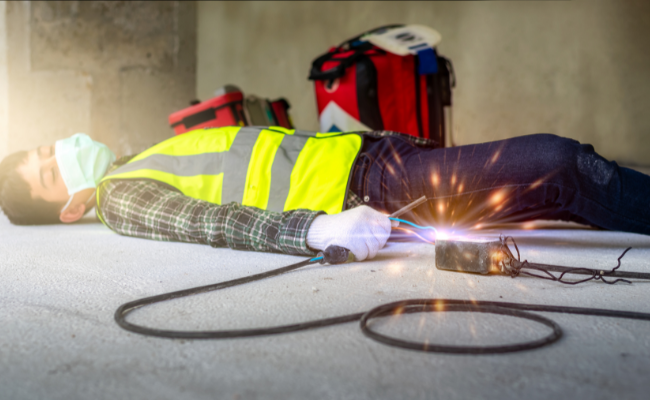Essential First Aid Measures for Electric Shock
- October 31, 2023
- No Comments

What is an Electric Shock?
Electric shock transpires upon contact with an electric current, allowing electrical energy to traverse the body. The degree of severity is contingent on variables like current voltage, contact duration, and the trajectory within the body. This experience can range from mild discomfort to severe, potentially causing life-threatening injuries. In the event of an electric shock, the current flows through the body, potentially causing burns to internal and external tissues, with the added risk of organ damage.
Why Electric Shock is dangerous?
Electric shock can have various adverse effects on the body. The most immediate concern is the potential for cardiac arrest or disruption of the heart's normal rhythm. Additionally, it can cause burns, damage to internal organs, and neurological injuries. Quick and appropriate first aid is crucial to minimize the impact of electric shock and improve the chances of a positive outcome.
How to Administer First Aid for Electric Shock: Key Measures to Take?
- Ensure Safety: Before providing assistance, ensure that the area is safe. Disconnect the power source or use non-conductive materials such as dry wood or rubber to move the person away from the electrical source. Do not touch the person with bare hands if they are still in contact with the electrical source.
- Call for Help: Dial emergency services immediately. Even if the person seems fine, it's essential to seek professional medical assistance as electric shock injuries may not be immediately apparent.
- Assess the Situation: Once the person is away from the electrical source, assess their condition. Check for responsiveness and breathing. If the person is not breathing, begin CPR immediately.
- Do Not Touch the Person: Avoid direct contact with the person until you are sure the electrical source is completely de-energized. If you touch the person while they are still in contact with electricity, you could become a secondary victim.
- Remove Constrictive Clothing: If the person is wearing tight or constrictive clothing, carefully remove it. This is important because swelling may occur due to burns, and constrictive clothing can exacerbate the situation.
- Treat Burns: If the person has burn injuries, cool the burns with cold running water for at least 10 minutes. Avoid using ice or very cold water, as this can further damage the tissue.
- Cover Burned Areas: After cooling the burns, cover them with a sterile non-stick dressing. Do not use adhesive bandages directly on the burns.
Treatment Solutions for Electric Shock:
- Professional Medical Evaluation: Seeking immediate medical attention is crucial after an electric shock. Even if the person appears to be fine, internal injuries may have occurred. A thorough evaluation by healthcare professionals is necessary to identify and address any hidden injuries.
- Cardiac Monitoring: Individuals who have experienced electric shock should undergo cardiac monitoring to check for irregular heart rhythms. Cardiac abnormalities can develop even after the initial shock, making continuous monitoring essential.
- Burn Care: For those with burn injuries, specialized care is necessary. This may involve debridement, wound dressing changes, and other treatments to promote healing and prevent infection.
Benefit Points:
- Prevention of Further Injury: Swift and appropriate first aid measures can prevent further injury and complications. Removing the person from the electrical source and ensuring a safe environment is the first step in preventing additional harm.
- Increased Survival Rates: Prompt initiation of CPR and quick access to professional medical care can significantly increase the chances of survival, especially if the electric shock has led to cardiac arrest.
- Minimized Long-Term Effects: Timely and proper treatment can minimize the long-term effects of electric shock. Professional medical evaluation ensures that any internal injuries or complications are identified and addressed promptly.
- Effective Burn Management: Immediate attention to burn injuries with proper cooling and dressing can contribute to better outcomes and reduce the risk of infection.
Comments (0)